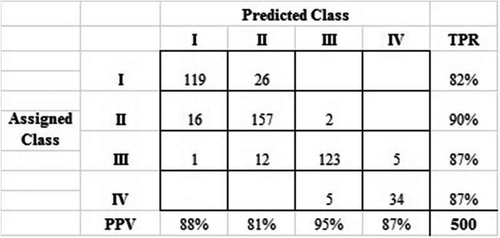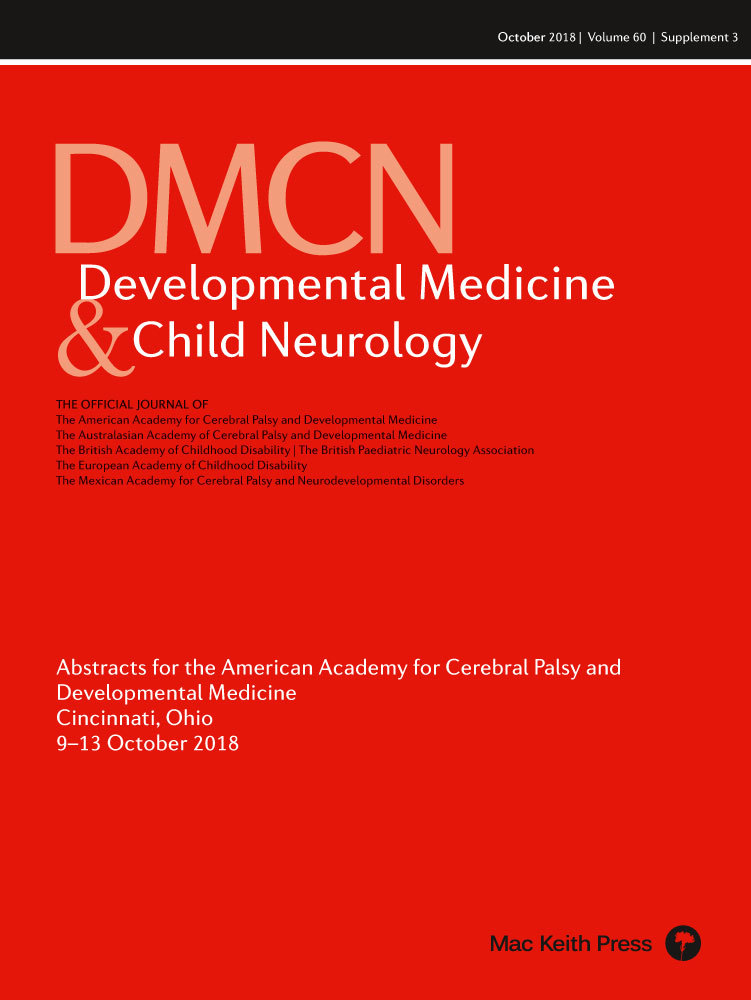Assignment of gross motor function classification level using an algorithm based on GMFCS descriptors and functional skills
F10
J Stout1, T Novacheck2
1James R. Gage Center for Gait & Motion Analysis; Gillette Children's Specialty Healthcare, St. Paul, MN, USA; 2James R. Gage Center for Gait & Motion Analysis Gillette Children's Specialty Healthcare, Dept. of Orthopedics University of Minnesota, St. Paul, MN, USA
Background and Objective(s): The Gross Motor Function Classification System (GMFCS) for those with cerebral palsy (CP) provides a description of a child's or youth's present abilities and limitations in gross motor function.[1,2] It is used extensively by clinicians, families, and researchers to communicate usual performance in mobility across a range of environments. The system is inclusive of mobility other than ambulation which was the focus of previous functional scales.[3] The widespread use of the GMFCS among clinicians has created a need to be as consistent as possible in assigning the appropriate level. Similarly, use in research has created a need to retrospectively classify individuals for whom functional information is available but no GMFCS assignment was made. Currently, there is no objective decision tree or algorithm that captures the principles of GMFCS level assignment.The purpose of this study was to determine if an algorithm based on distinguishing descriptors of the GMFCS provides an accurate assignment of GMFCS level.
Study Design: Descriptive.
Study Participants & Setting: 500 individuals with a diagnosis of cerebral palsy from a gait laboratory database at a tertiary care institution for individuals with disabilities.
Materials/Methods: The Gillette Functional Assessment Questionnaire [4,5] (walking level & selected skills) (FAQ), a modified Hoffer functional ambulation scale [3] and a walking video were used to devise an algorithm to assign GMFCS levels I-IV based on GMFCS descriptors and distinguishing characteristics. Individuals with a diagnosis of CP and a pre-assigned GMFCS level were queried from our database. A test set of 500 individuals were randomly chosen for algorithm assignment in proportion to GMFCS levels in the database population (29% GMFCS I; 35% GMFCS II, 28% GMFCS III, 8% GMFCS IV).
Results: Initial database query yielded 2215 visits of individuals with a diagnosis of CP, pre-assigned GMFCS level, and seen for an initial, spasticity, or pre-surgery evaluation. 2146 had complete information from which the random test set was chosen. 5 of 22 skills from the FAQ were utilized in the algorithm in addition to the modified Hoffer scale and video: step up/down curb without assistance, jump off a single step, run, walk up/down stairs with railing, and walk up/down stairs without railing. Accuracy of the algorithm was 87%. The true positive rate (TPR) ranged from 82–90%. The positive predictive value (PPV) ranged from 81–95%. The rate of misclassification by more than one level was 0.2%.
Conclusions/Significance: The algorithm based on GMFCS descriptors provides an accurate method to assign levels retrospectively. Utility in concurrent clinical situations is apparent as well. Observation of walking abilities of the individual and conversation with the family regarding abilities on particular skills would lead to a common, collaborative assignment of level, and would enhance consistency of assignment among clinicians and family alike. The positive rate and predictive value are comparable (and in some cases better) to the levels of agreement reported in the original study.[1] Dependence on direct observation of walking ability or use of video presents a limitation in situations where retrospective assignment is necessary for large numbers of individuals. The construction of the algorithm using the distinguishing features of the GMFCS allows the clinician more objectivity in level assignment.
[1] Palisano R. DMCN1997; [2] Gross Motor Function Classification System - E&R, CanChild, 2007; [3] Hoffer M. JBJS 1973. ; [4] Novacheck T. JPO 2000; [5] Stout J.DMCN 2012.





